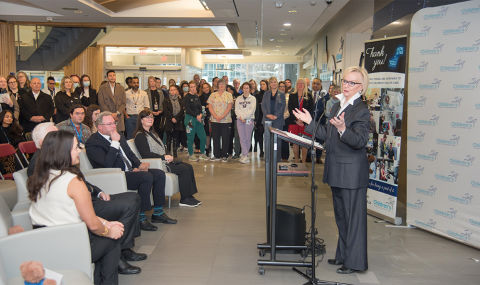Chest X-rays (CXR)
- Chest X-rays are a routine part of care in the intensive care unit. A technician comes around in the morning with a portable X-ray machine and x-rays most patients every day or two. The x-rays are used to check for many things, such as fluid in and around the lungs and the proper placement of chest and feeding tubes.
Magnetic Resonance Imaging (MRI)
- MRIs are used to get a very detailed picture of the body tissues and organs. MRIs use a strong electromagnetic field to make two- and three-dimensional images of the area scanned.
- The use of a strong magnet means it is important to remove all metal before an MRI. The scanner is loud, so patients and staff are given ear plugs. Sometimes a patient will be given a substance to increase the contrast and sharpen the details of certain body parts, such as the blood vessels. Like a CT scan, an MRI is painless. Patients travel to radiology with a nurse for this test.
Blood tests
- Measurements of blood gases and other blood tests are used to help diagnose problems with the lungs and many other body systems. Blood is often taken from a catheter inserted into an artery called an arterial line.
Bronchoscopy
- A bronchoscopy allows a physician to look inside the air passages. A bronchoscope is a special tube that has a built-in camera and a tube for suctioning and sampling. The physician can look for abnormalities in the air passages and collect samples that can be sent to the laboratory to identify infection or other diseases.
Sputum sample
- Sputum is the mucous and fluid that can collect in the lungs. A sample can be collected and sent to laboratory to be tested to see what it is made up of, and if there is any disease present. Sputum is usually collected by suctioning the breathing tube.
Nuclear medicine
- Nuclear medicine involves using mildly radioactive substances, called isotopes, to identify injury or disease. Certain radioactive substances will find and attach themselves to particular cell types or proteins. The person is then scanned with a special camera. The isotopes ‘light up’, telling the physicians where the cell or protein they are looking for has collected.
Ultrasound
- Ultrasound tests use the measurement of sound waves sent into the body to identify masses or fluid. It is painless and can be performed at the bedside. Ultrasounds can help a physician tell where to place a chest tube to drain fluid.


